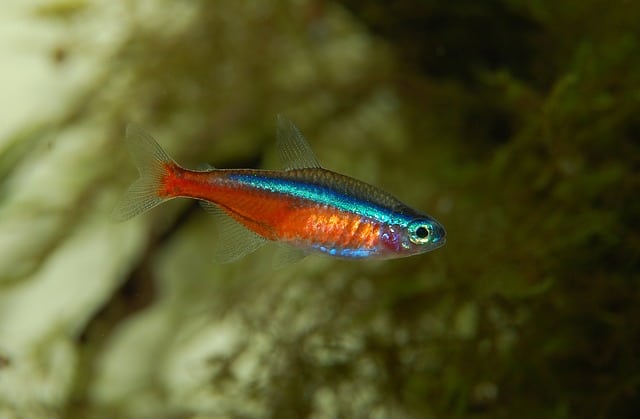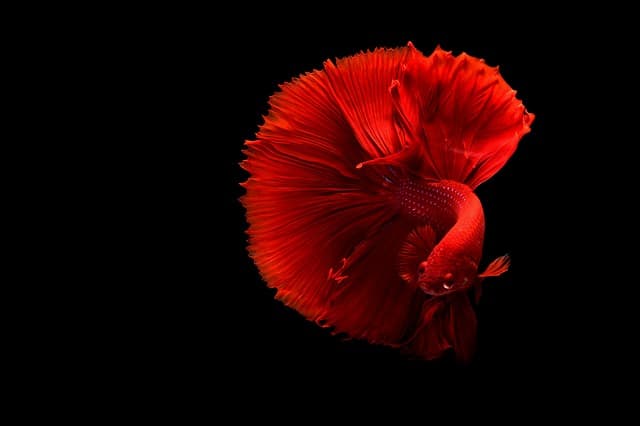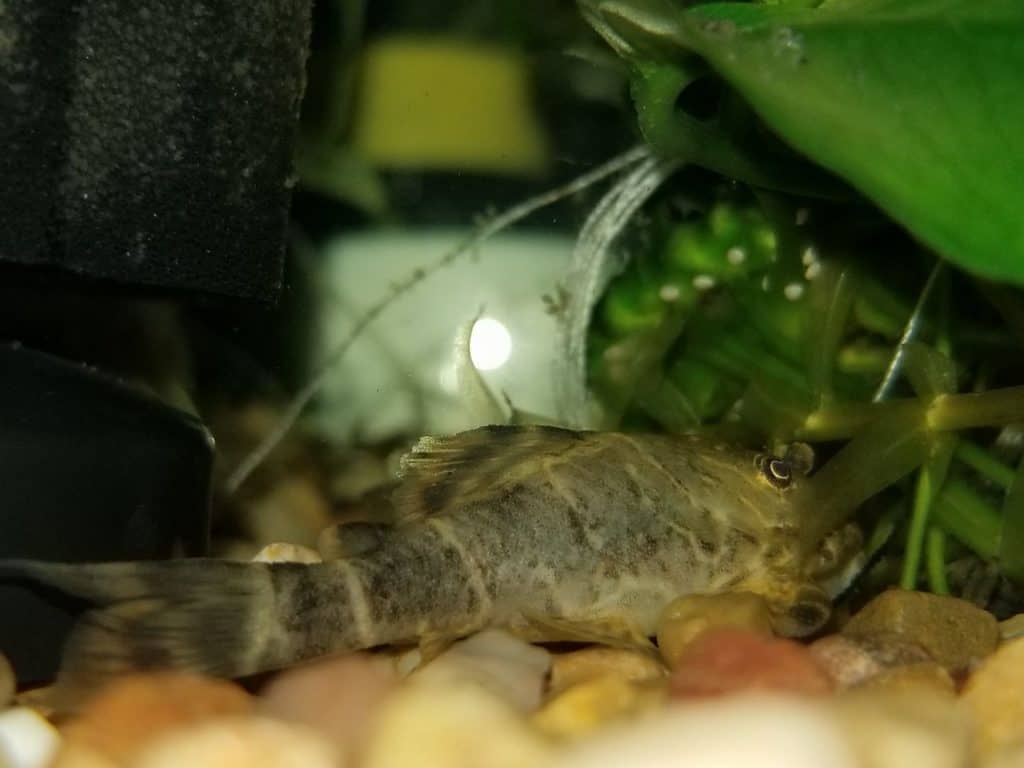German blue rams are a type of freshwater cichlid fish. Originating in the slow-moving waters of the Orinoco River in South America, these fish are vibrantly colored and a joy to observe in captivity. If you have German blue rams and are thinking of breeding them, you may be wondering how to go about it?
To breed German Blue Ram cichlids in captivity, you must begin by purchasing a group of at least 4 juveniles and allow them to form mated bonds in the same tank. Plenty of protein-rich food, clean water with the proper parameters, and a stress-free environment are also required.
Now that you’re aware of what you need to breed German blue rams in captivity, let’s continue to ‘dive deeper’ into this topic. Together we’ll discover what tank conditions are required; what foods help promote breeding; how many eggs are laid each breeding season; how long it takes for eggs to hatch; how often they breed; how to care for offspring; and how stress from tankmates affects breeding.
So, if you’re interested in learning more about the reproductive world of the German blue ram, then let’s continue onward…
What Water Conditions are Best for German Blue Ram Breeding?
German blue rams prefer tropical aquatic conditions. Soft, acidic water with a temperature ranging from 80- to 85- degrees Fahrenheit and a pH level between 5.0 and 6.0 are required. To encourage breeding, keep the heat in the tank at the higher end of the spectrum, even increasing it to 86-degrees Fahrenheit.
These fish are highly sensitive to fluctuating water parameters. Ammonia levels must be kept to a bare minimum. Performing weekly partial water changes of at least 15% is the best way to keep their aquatic habitat clean and safe while promoting healthy spawning practices.
What Type of Food is Best for Breeding German Blue Rams?
German blue rams are known to be picky eaters. To encourage breeding, you must feed them high-quality, protein-rich foods such as frozen brine or mysis shrimp and freeze-dried bloodworms. You can supplement their diet with sinking pellets and a few treats like tubifex worms.
It’s better to feed this species two or three times daily rather than one big meal. Their stomachs are small in comparison to their overall size and therefore can’t digest large amounts of food at one time. A well-balanced and varied diet will promote healthy breeding practices in captivity.
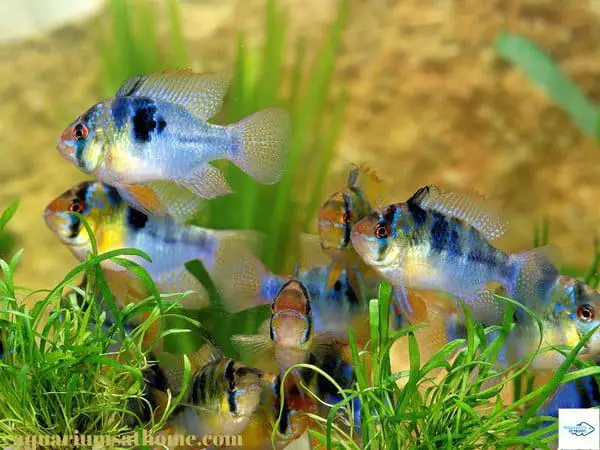
How does Tank Size Affect German Blue Ram Breeding?
For a species-only tank with a mated pair of German blue rams, a 10-gallon tank is all that’s required for breeding. If you have a community tank with two or more mated pairs of German blue rams, then add an additional 10-gallons (minimum) of water per pair.
Since bigger is better in terms of aquarium size, opt for the largest tank possible. German blue rams are highly active and need lots of space to swim about freely. In a too small or overcrowded tank, they’ll become aggressive, territorial, and stressed which will hinder their ability to breed.
Do German Blue Rams Breed Easily?
Under the right aquatic conditions, German blue rams breed quite easily. However, most eggs don’t have the opportunity to hatch as they get eaten. To make the breeding process even easier, keep the tank temperature up and the pH level stable. A species-only environment is also recommended.
How often do German Blue Rams Breed?
German blue rams will breed every month under optimal environmental circumstances. In captivity, the water parameters should be specifically suited to this species and the tank must be clean, safe, and ammonia-free. Upping the temperature in the aquarium will encourage them to breed more often.
How many Eggs do German Blue Rams Lay?
German blue ram females typically lay anywhere from 150 to 250 eggs in a single breeding season! The older the female gets, the more eggs she’ll lay – after multiple spawnings, females can up to 500 eggs! If it’s her first-time procreating, she’ll likely lay only about 20 eggs.
How Long do German Blue Rams Eggs Take to Hatch?
German blue ram eggs typically take up to 3 days to hatch, provided the parents haven’t eaten them, that is! This species is known to eat their own offspring so you must remove the adults promptly from the breeding tank as soon as the eggs have been fertilized.
How to Care for German Blue Ram Eggs?
To properly care for German blue ram offspring, make sure to do the following:
- Set-up a breeding tank in advance with same water parameters as the main aquarium – make sure you have plants and stones in the tank for eggs to adhere to.
- Move the parents to the breeding tank as soon as they demonstrate mating behavior such as heightened aggression towards tankmates and the male frantically chasing the female around.
- Watch for signs of spawning and look for clusters of pink-colored eggs on leaves or rocks in the breeding tank.
- Promptly remove the parents from the breeding tank after the eggs have been fertilized (watch for the adults fanning water over the eggs) and place them back in the main tank.
- As soon as the eggs have hatched, feed baby brine shrimp or powdered fry food to the offspring.
- Once the offspring are free-swimming, they can be moved back into the main tank with their mom and dad since this species is known to provide bi-parental brood care.
- Observe the activity in the main tank to ensure fry are safe and being protected by their parents.
*To improve the survival rate of German blue ram offspring, keep them in a species-only environment. A community tank will test their mortality as other fish and invertebrates may view them as prey. A single species aquarium with ideal aquatic conditions suited specifically for German blue rams is your best bet.
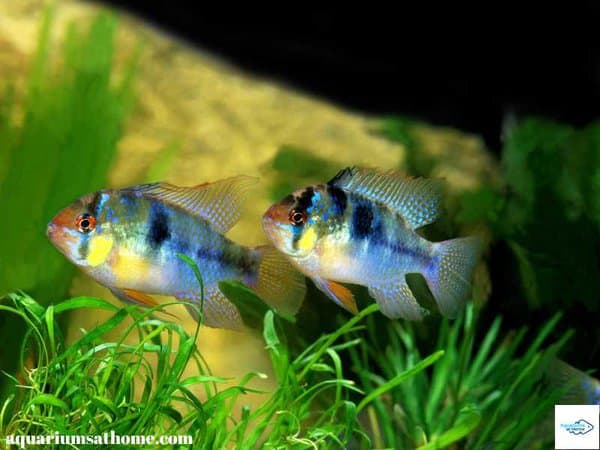
What to do with German Blue Ram Fry?
To avoid being eaten by their parents, it’s best to remove adult blue rams from the breeding tank as soon as the eggs have been fertilized. Once fry have hatched, they can be placed back the main aquarium with their parents since this species is known to protect and raise their offspring.
How does Stress from Tankmates Affect German Blue Ram Breeding?
Stress from tankmates will negatively affect German blue rams and their ability to reproduce. Bullying or lack of space in an aquarium not only makes this species more aggressive, but it can also lead to stress and/or illness.
The only way for German blue rams to procreate successfully in captivity is when they feel safe in their environment. A planted tank with plenty of coverage and decorations like rocks, driftwood, and caves to act as hiding places is a good way to help reduce fish stress.
Final Thoughts
To conclude, breeding German Blue Ram cichlids in captivity requires that you start with a group of at least 4 juveniles in the same tank and allow them to form mated bonds. Providing protein-rich food and a clean, safe aquatic environment are also necessary.
I hope this article has given you all the information you need to breed German rams successfully in captivity. Thanks for reading and best of luck with you aquarist hobby!
Recommended Posts
German Blue Rams versus Bolivian Rams – What’s the Difference?
Should German Blue Rams be Kept in Pairs?



